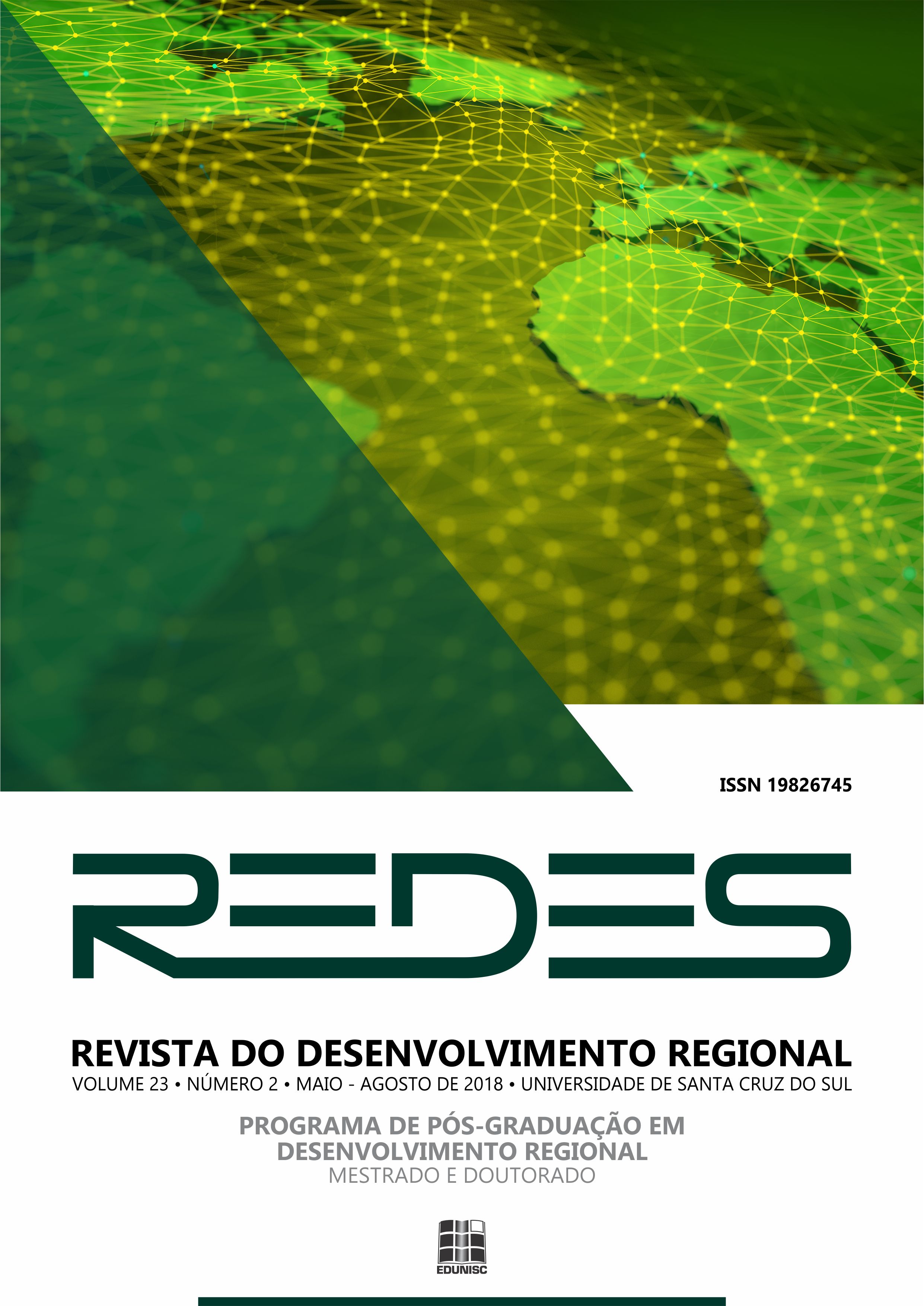Tipologia de cluster no abate e preparo da carne de frango: um estudo no Estado do Paraná
DOI:
https://doi.org/10.17058/redes.v23i2.9836Palavras-chave:
Tipologia de Cluster. Aglomerações Produtivas. Eficiência Coletiva.Resumo
O Paraná é destaque nas exportações de proteína do frango do Brasil. Compreender a dinâmica existente no setor pode servir de apoio aos tomadores de decisões em estratégias para o desenvolvimento regional. Por isso, este artigo tem como objetivo identificar o tipo de aglomeração industrial da atividade de abate e preparo da carne de frango no Paraná. Para tanto, foram levantados os dados do emprego durante o período de 2006 a 2014, calculados o Quociente Locacional e o Coeficiente Gini Locacional, para encontrar a especialização do emprego na atividade, em que se destacou a região sudoeste do Estado. Complementarmente, foram analisados alguns elementos da aglomeração industrial e o resultado mostrou características de economias externas locais e ação conjunta entre os atores, configurando uma eficiência coletiva na atividade, além de outros aspectos de relação interfirmas, que enquadra a atividade da região sudoeste na tipologia de cluster Radial do tipo transnacional.Downloads
Os dados de download ainda não estão disponíveis.
Downloads
Publicado
2018-05-15
Edição
Seção
Redes de Cooperação, Arranjos Produtivos e Desenvolvimento Regional
Licença
A submissão de originais para este periódico implica na transferência, pelos autores, dos direitos de publicação impressa e digital. Os direitos autorais para os artigos publicados são do autor, com direitos do periódico sobre a primeira publicação. Os autores somente poderão utilizar os mesmos resultados em outras publicações indicando claramente este periódico como o meio da publicação original. Em virtude de sermos um periódico de acesso aberto, permite-se o uso gratuito dos artigos em aplicações educacionais e científicas desde que citada a fonte conforme a licença CC-BY da Creative Commons. Creative Commons Atribuição 4.0 Internacional.
Creative Commons Atribuição 4.0 Internacional.
Como Citar
Tipologia de cluster no abate e preparo da carne de frango: um estudo no Estado do Paraná. (2018). Redes, 23(2), 264-289. https://doi.org/10.17058/redes.v23i2.9836



